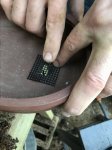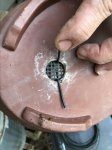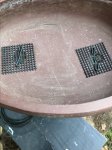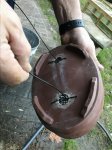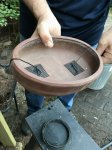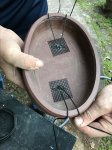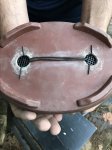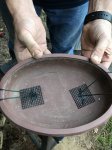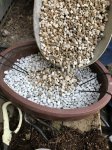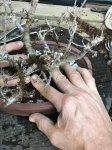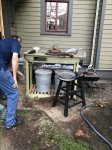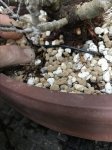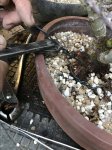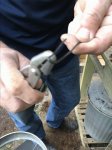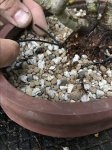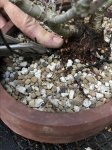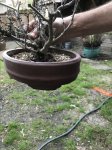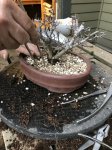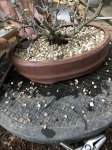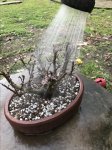I agree.
Maybe
@markyscott could further explain why he does a few of the things he does, like:
- What is the point of the 'drainage layer' and why 'especially with a deep pot'?
- Doesn't a 'drainage layer' just elevate the position of the saturation zone in the primary substrate? Why no just leave this zone at the bottom of the pot by not using a 'drainage layer'?
- What is the point of the chop sticking a maple?
- We want a flat 'plate' of roots (even if we aren't after pancake nebari, right?), so why not just place them on a bed of substrate and simply cover them with more. Subsequently poking the substrate around just stirs/messes things up.
- What is the point of patting with a little trowel?
- My substrate and yours are non-compacting.
Oso, I'm going to let Scott address the drainage layer issue, he's the geologist!
Chopsticking: the idea is to make sure the soil is in contact with the feeder roots. Very little chopsticking is required. In fact, most people do way too much of it! Scott didn't go into much detail here on this repotting, since it's small and relatively compact.
When we prepare the rootball, we want to tease out about 1/2 inch of fine roots on the sides. The bottom of the rootball should be flat and smooth. Having the sides "fuzzy" with little roots means they will be surrounded by the new substrate. The chop sticking is just to make sure it's in contact, and there's no large air pockets. When you "stick", if it's hard, don't push. But if the chopstick goes in really easy, it's likely to have hit an air pocket. So, insert chopstick, and wiggle it a bit. Meanwhile, with your other hand, you should be gently "backfilling" the hole where the chopstick found the pocket. Subsequent jabs of the stick should be shallower and shallower as you backfill the soil into the hole.
There's no reason to chopstick places where there are no roots. All we're trying to do is fill the voids.
Patting with the trowel: again, it's to get the soil to settle evenly, and make a nice flat surface. Some pots have a bit of inside lip, and this helps to fill in that area.
One VERY important technique that Scott mentioned, but did not illustrate with a photo is "tapping" the pot. After the chopsticking, and backfilling is done, hold the pot securely, and lightly tap the pot with the meat part of your fist. On all four sides. The soil will settle in. You may have to add more soil! Again, the idea is to fill all the voids. Afterwards, then smooth and level with the broom and compact with the trowel.
